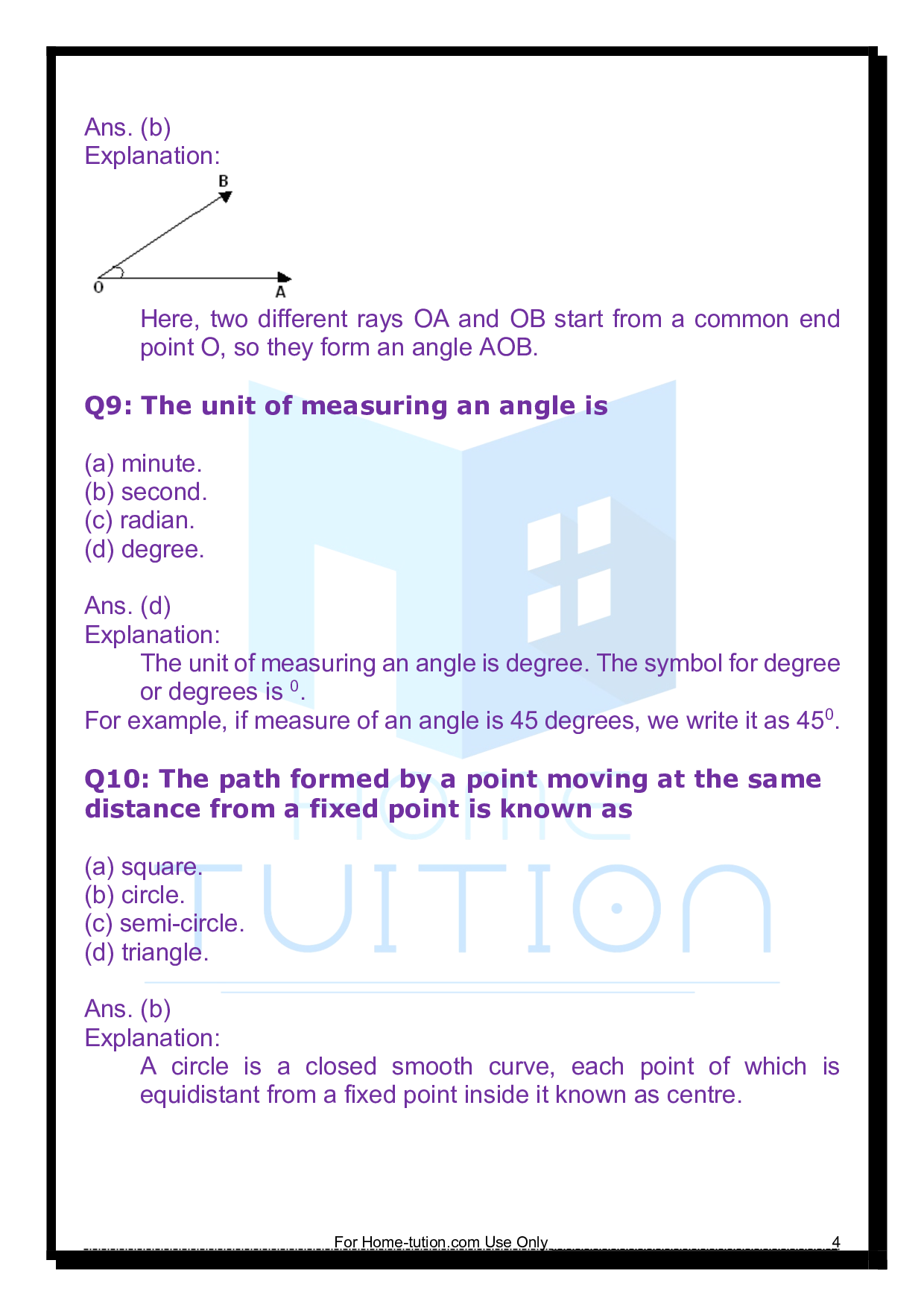As I recall my early steps in the enchanting world of geometry, I couldn’t help but marvel at its intricate beauty and profound applications. The simplicity of lines, the grace of curves, and the mesmerizing harmony they create ignited a spark of curiosity within me. And so, let’s delve into a journey of exploring the vibrant realm of geometrical ideas, armed with questions that will guide our path and answers that will illuminate our understanding.

Image: www.home-tution.com
Geometry, a branch of mathematics that deals with the properties of shapes and their relationships, is a fascinating subject that lays the foundation for our comprehension of the physical world. From the towering pyramids of Egypt to the intricate patterns in nature, geometry is a language that unveils the hidden order underlying our surroundings.
Shapes and Their Classifications
Let’s begin our exploration with the basic building blocks of geometry—shapes. We can classify shapes based on their properties, such as the number of sides, angles, and dimensions. For example, a triangle is a three-sided figure with three angles, while a quadrilateral has four sides and four angles.
Circles, on the other hand, are unique curves that have no sides or vertices. They are defined by their radius, which determines the distance between the center and any point on the circle’s circumference. By studying these fundamental shapes, we unravel the secrets of geometric constructions and their applications.
Measurement and Symmetry
Geometry is not just about identifying shapes; it also involves measuring and understanding their dimensions. We measure lengths, areas, and volumes using units such as centimeters, square meters, and cubic centimeters. By learning the formulas for these measurements, we can determine the size and capacity of various objects.
Another fascinating aspect of geometry is symmetry. Symmetry refers to the repetition of patterns in a shape. It can be rotational symmetry (where the shape looks the same after rotation), reflection symmetry (where the shape looks the same when flipped over a line), or translational symmetry (where the shape looks the same after being moved).
Angles and Polygons
Angles are formed when two lines meet at a common endpoint. Understanding angles is crucial because they play a significant role in polygons—closed shapes that have straight sides. Triangles, squares, and rectangles are examples of polygons. By studying the properties of angles and polygons, we develop a deeper appreciation for the relationships between different shapes.
It’s worth noting that some shapes, like circles, do not have angles. Circles are categorized as “non-polygonal” shapes that possess unique characteristics distinct from polygons.

Image: www.mathsglow.com
Latest Trends and Developments
The field of geometry is constantly evolving, with new trends and developments emerging thanks to advancements in technology. Computer-aided design (CAD) software allows architects, engineers, and designers to create complex 3D shapes and models. Fractal geometry, a relatively new area of mathematics, explores self-similar patterns that repeat on multiple scales.
In the field of materials science, researchers are using geometrical principles to engineer new materials with unique properties. Nanotechnologies, for example, utilize ultra-small particles arranged in specific geometric patterns to create materials with enhanced strength, conductivity, and durability.
Tips and Expert Advice
Embarking on your exploration of geometry, keep these tips and expert advice in mind. First, practice regularly—the more you practice, the easier it becomes to identify and understand shapes and their properties. Attend geometry classes, complete practice assignments, and engage in online quizzes to reinforce your learning.
Visualize concepts—geometry is a visual subject. Try to create mental images of shapes and their transformations. Use sketches, diagrams, and animations to enhance your comprehension. Explore geometry in the real world—look for shapes in buildings, nature, and everyday objects. By connecting geometry to the tangible world, you can solidify your understanding.
FAQ on Basic Geometrical Ideas
- Q: What is the difference between a line and a segment?
A: A line is a straight path that extends infinitely in both directions, while a segment is a part of a line with two endpoints. - Q: How many sides does a quadrilateral have?
A: Four - Q: What is the formula for the area of a triangle?
A: Length of base x Height ÷ 2
Basic Geometrical Ideas Class 6 Questions And Answers
Conclusion
Our journey into the realm of geometry for class 6 has equipped us with a solid foundation in understanding shapes, measurement, and symmetry. Geometry is a subject that cultivates analytical thinking, problem-solving skills, and creativity. By embracing the concepts and techniques discussed in this comprehensive guide, students can not only excel in their studies but also gain a deep appreciation for the beauty and applications of geometry in the world around us.
Are you intrigued by the charm of geometry and eager to delve deeper into its vast frontiers? Share your questions, thoughts, and experiences in the comments section. Together, let’s continue our geometrical explorations and unfold the endless wonders this subject holds.